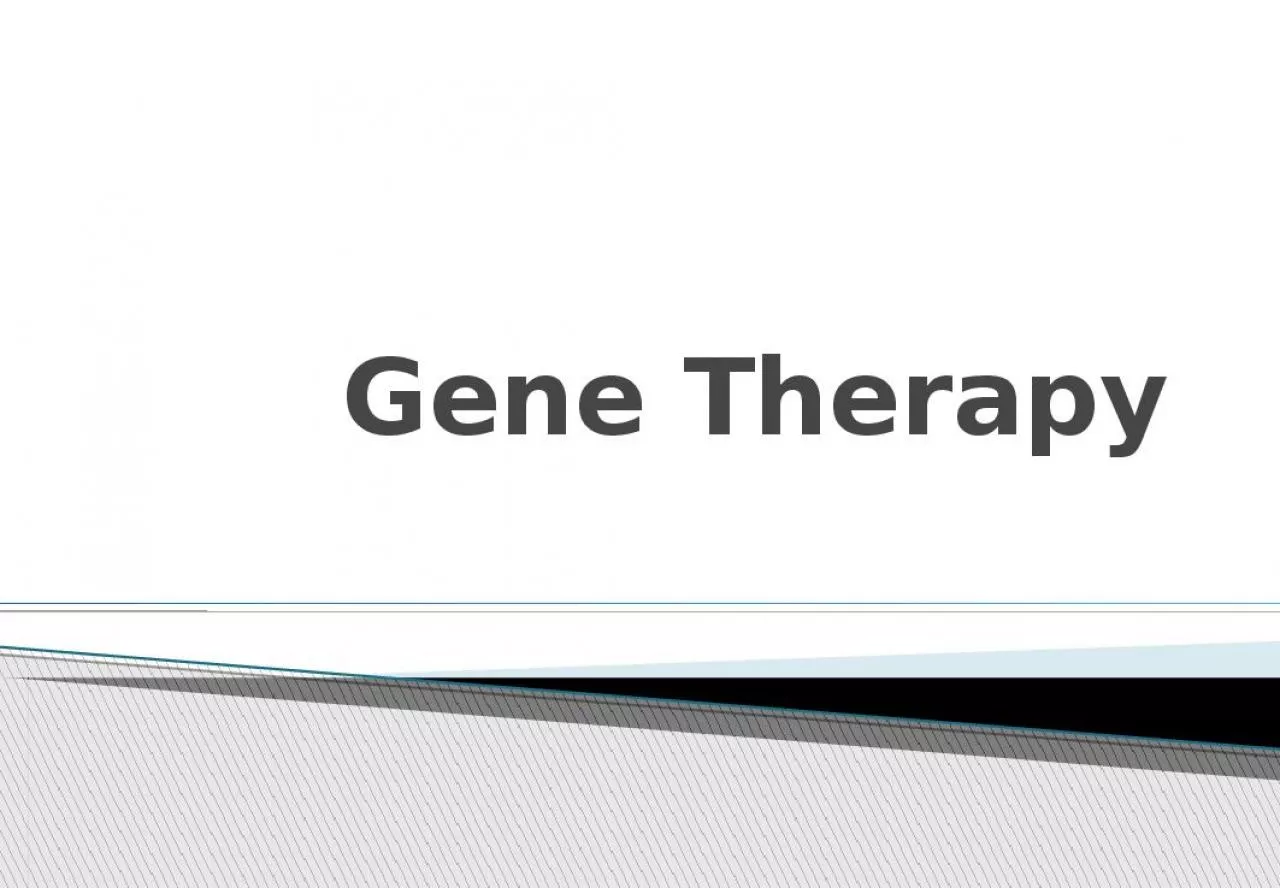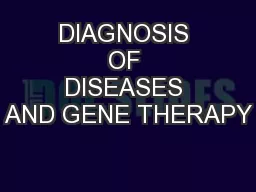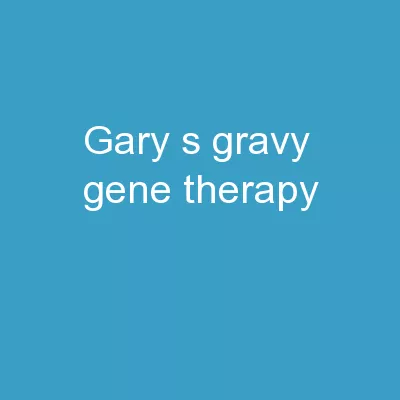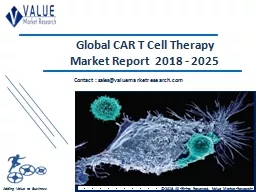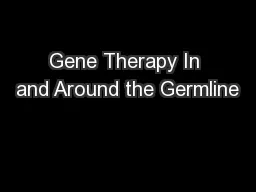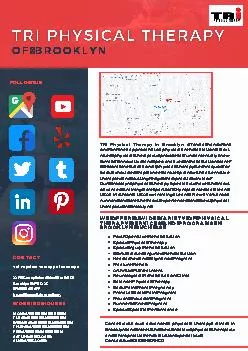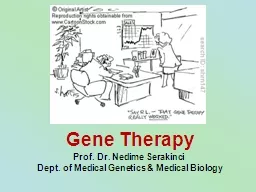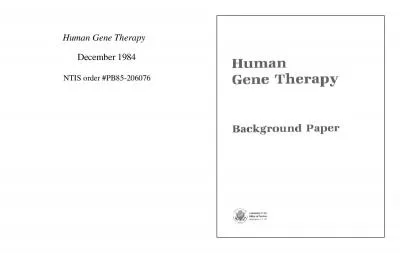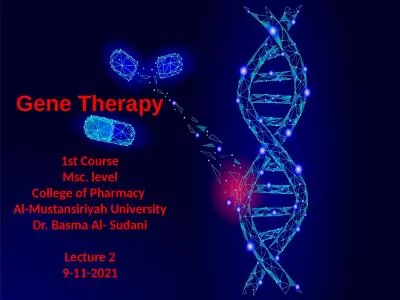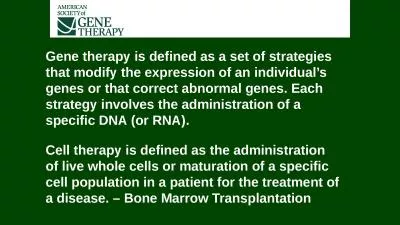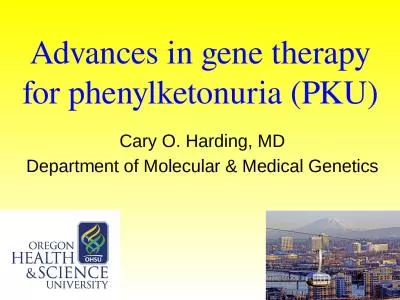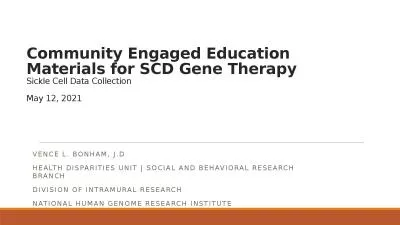PPT-Gene Therapy Of the over
Author : fanny | Published Date : 2022-06-11
6000 inherited human diseases catalogued to date only a few are currently treatable Gene therapy introducing functional copies of a gene into an individual with
Presentation Embed Code
Download Presentation
Download Presentation The PPT/PDF document "Gene Therapy Of the over" is the property of its rightful owner. Permission is granted to download and print the materials on this website for personal, non-commercial use only, and to display it on your personal computer provided you do not modify the materials and that you retain all copyright notices contained in the materials. By downloading content from our website, you accept the terms of this agreement.
Gene Therapy Of the over: Transcript
Download Rules Of Document
"Gene Therapy Of the over"The content belongs to its owner. You may download and print it for personal use, without modification, and keep all copyright notices. By downloading, you agree to these terms.
Related Documents

